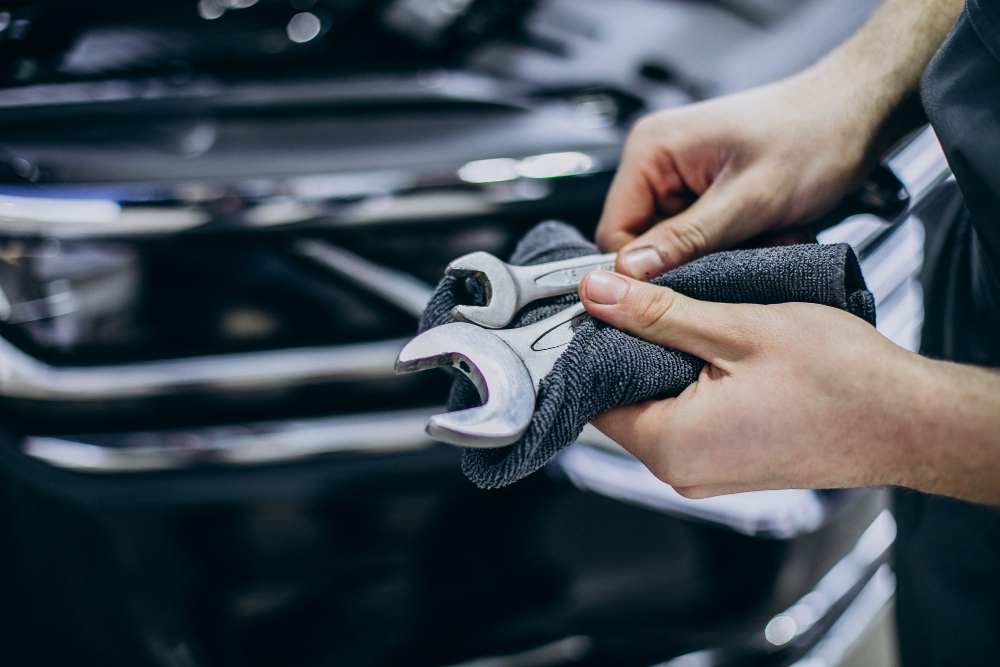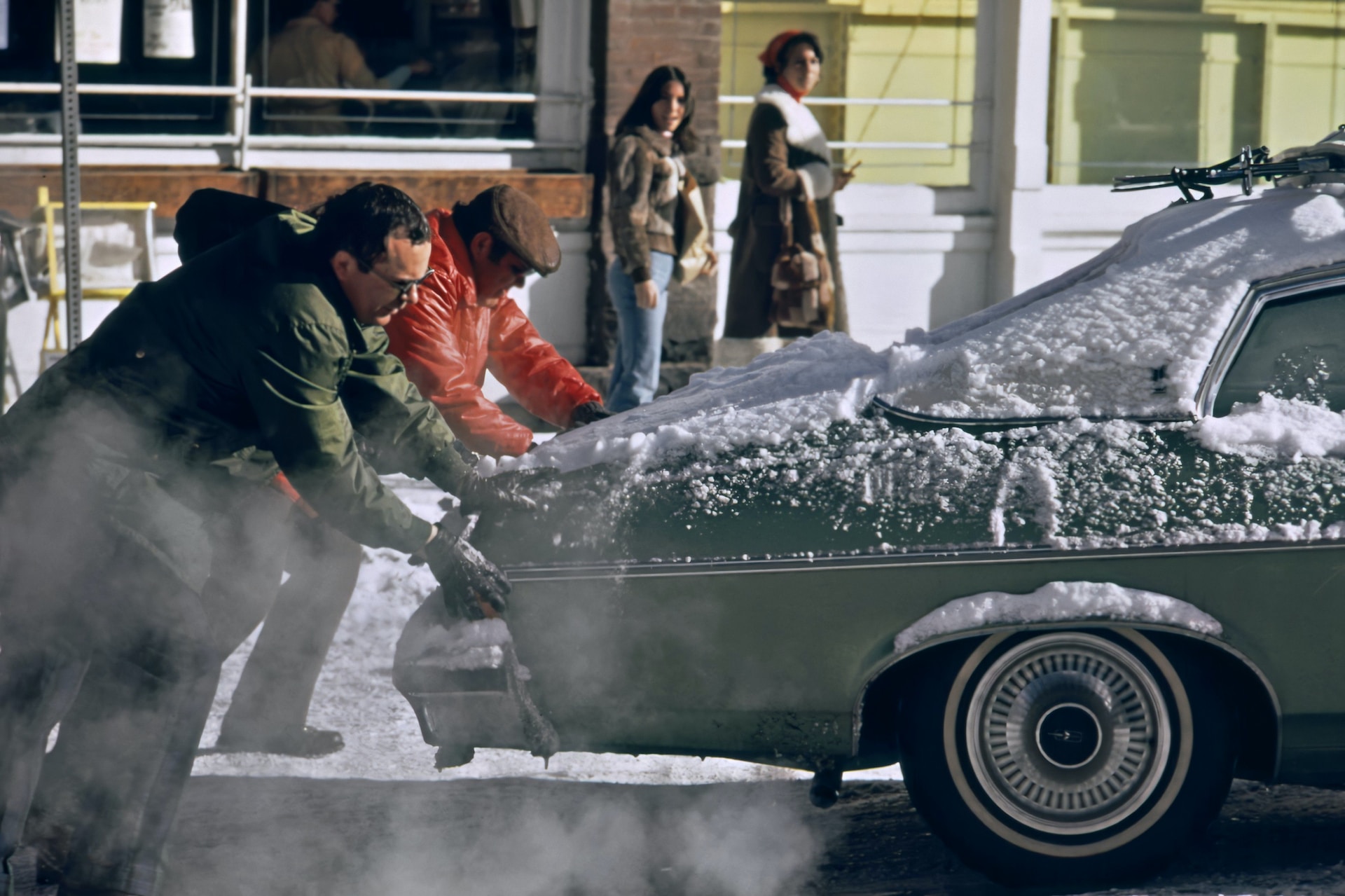The onset of winter brings with it numerous challenges, with frozen car locks being a particularly exasperating issue. This common problem arises as temperatures drop, causing the moisture inside lock mechanisms to freeze solid.
Finding your car locks frozen can be more than just an inconvenience; it can disrupt your entire day’s schedule and, in worse cases, leave you stranded in freezing conditions. Such situations can be especially daunting early in the morning or late at night when immediate assistance might not be readily available.
Knowing how to effectively and safely unfreeze your car locks is crucial during the winter months. This knowledge not only helps you avoid potential delays and frustrations but also ensures that you can quickly and safely gain access to your vehicle, keeping your daily routine uninterrupted even in the coldest weather.
Why Car Locks Freeze?
- Moisture Accumulation: Car locks are exposed to the environment, which means they are prone to collecting moisture from the air. This moisture can seep into the small crevices and internal mechanisms of the lock.
- Sub-Zero Temperatures: When temperatures drop below freezing, the moisture trapped inside the lock mechanism turns into ice. This is a simple consequence of water’s physical properties, where it expands and solidifies at 0°C (32°F) or lower.
- High Humidity Levels: In areas with high humidity, there is more moisture in the air. This increased moisture content makes it more likely for car locks to accumulate enough water, which then freezes as temperatures drop.
- Precipitation and Wet Conditions: Rain, snow, and sleet can contribute additional moisture to the locks. Wet conditions are particularly problematic because they increase the amount of water that can freeze inside the lock mechanism.
- Condensation: Even in the absence of direct precipitation, temperature fluctuations can cause condensation. This is especially true when a warm day is followed by a rapid drop in temperature overnight, leading to condensation that freezes in and around the lock.
Best Methods to Unfreeze Car Locks

1. Hand Warmers or Body Heat
Using hand warmers or body heat is a gentle yet effective way to thaw frozen car locks. If using a hand warmer, activate it according to the package instructions, then hold it firmly against the lock. The heat transfer will gradually melt the ice inside. you can use your palm or fingers, pressing them against the lock for several minutes. Your body heat will slowly warm the metal, helping to release the frozen mechanism. This method requires patience but is safe for both the lock and the car’s paint.
2. De-icing Products
Commercial de-icing sprays are specifically formulated to melt ice quickly and efficiently. To use, shake the can well, then aim the nozzle directly at the keyhole of the frozen lock. Spray the de-icer liberally, ensuring it penetrates the lock mechanism. After spraying, wait a few moments for the ice to melt. This method is fast and convenient, especially for those living in regions where frozen locks are a frequent occurrence. It’s advisable to keep a can of de-icer in your car during winter months for emergencies.
3. DIY De-icing Solutions
Creating a homemade de-icing solution is a cost-effective and easy method. Mix equal parts of isopropyl alcohol and water in a spray bottle. Shake well to ensure a thorough mix. Spray this solution directly onto the frozen lock. The alcohol, with a lower freezing point than water, will help dissolve the ice quickly. This solution is also useful for de-icing windshields and can be prepared in larger quantities for winter use. Store the bottle in your home or workplace so it’s readily available when needed.
4. Using a Hairdryer or Portable Heater
A hairdryer or portable heater can be an efficient tool to thaw a frozen car lock. First, ensure the hairdryer is in a warm setting, not hot, to avoid damage. Keep the hairdryer or heater a safe distance from the car to prevent any potential harm to the car’s exterior. Aim the flow of warm air directly at the lock for several minutes until the ice melts. This method requires access to an electrical outlet or a portable battery, making it more suitable for use in a garage or near your home.
5. Warm Water Method
Using warm water can provide a quick solution to a frozen car lock. Boil water and allow it to cool slightly – it should be warm, not scalding hot. Pour the warm water over the keyhole, ensuring that it covers the entire lock. The warmth from the water will melt the ice within moments. Be cautious as this method carries the risk of the lock refreezing due to residual moisture. It’s recommended to immediately dry the area and lubricate the lock afterward to prevent refreezing.
6. Magnet Hand Warmer
Magnet hand warmers offer a reusable, eco-friendly solution to thawing frozen car locks. To use, activate the hand warmer as per the product’s instructions – this usually involves flexing a metal disc inside the warmer to trigger a chemical reaction. Once activated, the warmer will emit a steady heat. Hold the magnet hand warmer against the frozen lock. The heat will transfer to the metal, gradually melting any ice within the lock mechanism.
7. Rubbing Alcohol Cotton Swabs
Rubbing alcohol is an effective ice melter due to its low freezing point. To utilize this method, soak a cotton swab or a small piece of cloth in rubbing alcohol. Then, apply it directly to the keyhole of the frozen lock. The alcohol will work its way into the mechanism, helping to dissolve the ice. This targeted application is particularly useful for delicate lock mechanisms and avoids the mess associated with larger-scale methods.
8. Silicone Spray
Silicone spray serves a dual purpose: it not only unfreezes the lock but also lubricates it, thus preventing future freezing. Spray the silicone directly into the keyhole. The silicone will penetrate the lock mechanism, displacing moisture and thawing any ice present. After applying, wait a few minutes to allow the spray to work.
9. Battery-Powered Heat Gun
A battery-powered heat gun offers a controlled and portable option for thawing frozen locks. Unlike a hairdryer, it doesn’t require an external power source, making it more versatile. To use, turn on the heat gun to a moderate setting and aim it at the frozen lock from a safe distance. The warm air will gently thaw the ice without damaging the surrounding areas of your car. It’s important to use this tool with caution to avoid overheating any part of the car.
10. Lock Warming Key Case
Lock-warming key cases are innovative gadgets designed for frozen lock situations. These cases have an in-built feature that warms up the key. Insert your key into the case, activate the warming feature, and wait for the key to heat up. Once warm, gently insert the key into the frozen lock. The heat from the key will transfer to the ice, melting it and allowing you to turn the key smoothly.
11. Graphite Powder
Graphite powder is an excellent choice for lubricating and unfreezing car locks. Its fine particles help to loosen the ice within the lock mechanism without causing damage. To use this method, first, ensure the keyhole is as dry as possible. Then, carefully sprinkle a small amount of graphite powder directly into the keyhole. Insert your key gently into the lock and slowly turn it back and forth a few times. The graphite acts as a lubricant, reducing friction and helping to break up the ice inside the lock.
12. Portable Car Battery Jumper with USB
Portable car battery jumpers equipped with USB ports offer a modern and convenient solution for thawing frozen car locks. These devices can be used to power a USB-compatible heating device or a hand warmer. First, connect the heating device to the jumper’s USB port. Once it’s powered up, hold the device close to the frozen lock, allowing the warmth to gradually melt the ice. Ensure that the heating element does not directly touch the car’s surface to avoid any damage.
What Not to Do?
- Avoid Using Open Flames: Never attempt to thaw a frozen lock with an open flame, such as lighters or matches. This can damage the lock and potentially lead to a fire hazard.
- Do Not Use Boiling Water: Pouring boiling water on the lock might seem like a quick solution, but it can cause more harm than good. The drastic temperature change can damage the lock, and the water can refreeze, worsening the problem.
- Avoid Forcing the Key: Turning the key with excessive force when it’s stuck in a frozen lock can lead to the key breaking inside the lock. This creates a more complex problem, potentially requiring professional assistance to resolve.
- Don’t Use Unfit De-icing Products: Be cautious about the type of de-icing product you use. Some chemicals might be too harsh and can damage the lock or the car’s paint.
- Refrain from Using Hot Objects: Avoid using hot objects like heated metal or glass to warm the lock. These can cause damage to both the lock and the surrounding areas of your car.
- Don’t Ignore Safety Precautions: When using electrical devices like hairdryers or portable heaters, always be mindful of electrical safety. Keep these devices dry and away from direct contact with snow or water to avoid electrical shocks.
- Don’t Leave the Locks Wet: After you’ve managed to unfreeze the lock, don’t leave it wet. This can lead to rusting or refreezing. Dry it thoroughly and consider applying a suitable lubricant.
Role of Professional Assistance To Unfreeze Car Locks

When dealing with frozen car locks, there are instances where seeking professional assistance is the best course of action. Here are some points of professional help in such situations.
- Expertise and Experience: Professional locksmiths have the expertise and experience to handle frozen locks without causing damage to your vehicle. They are trained in various techniques and have a thorough understanding of different lock mechanisms.
- Proper Tools and Equipment: Locksmiths are equipped with specialized tools designed for safely thawing and unlocking frozen car locks. These tools ensure that the process is done efficiently and without harming the lock or the car’s exterior.
- Avoiding Damage: DIY methods, while helpful, carry the risk of damaging the lock or the car if not done correctly. Professionals know the safest approaches to take, reducing the risk of costly damages that might occur from improper handling.
- Time-Efficient Solutions: In situations where you are in a hurry or the weather conditions are extreme, a professional locksmith can provide a quick and effective solution, saving you time and the stress of dealing with a frozen lock.
- Comprehensive Services: Beyond just unfreezing the lock, professionals can offer additional services such as repairing any damage to the lock, rekeying, or installing more weather-resistant locks.
- Safety and Security: A professional locksmith ensures that your car’s security is not compromised during the process. This is crucial, as some methods of unlocking might leave your car vulnerable to theft or break-ins.
Conclusion
effectively managing frozen car locks involves a balance of safe thawing techniques and proactive prevention. The most reliable methods include using de-icing sprays, applying gentle heat with hand warmers, or resorting to DIY solutions like alcohol-water mixtures. regular lock maintenance and protective measures can significantly reduce the likelihood of locks freezing, ensuring seamless access to your vehicle throughout the colder months.
































































